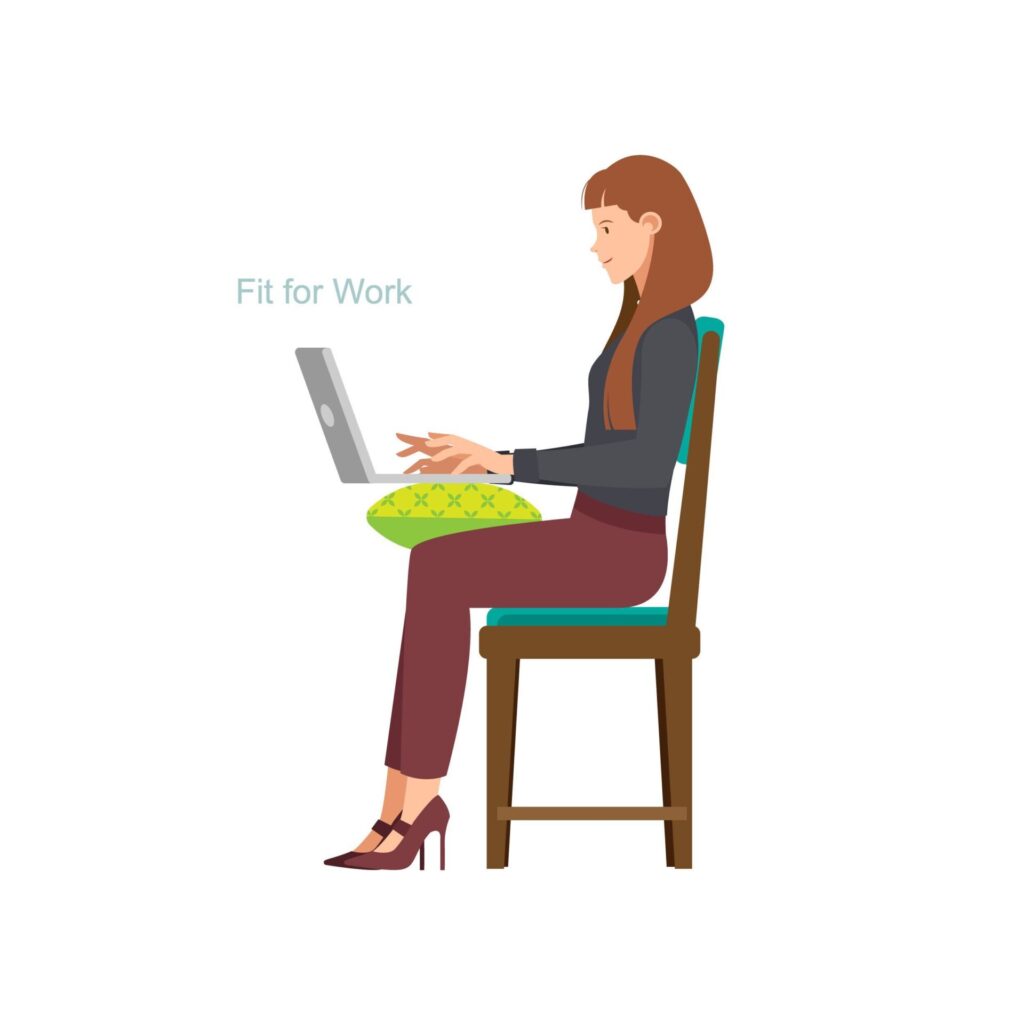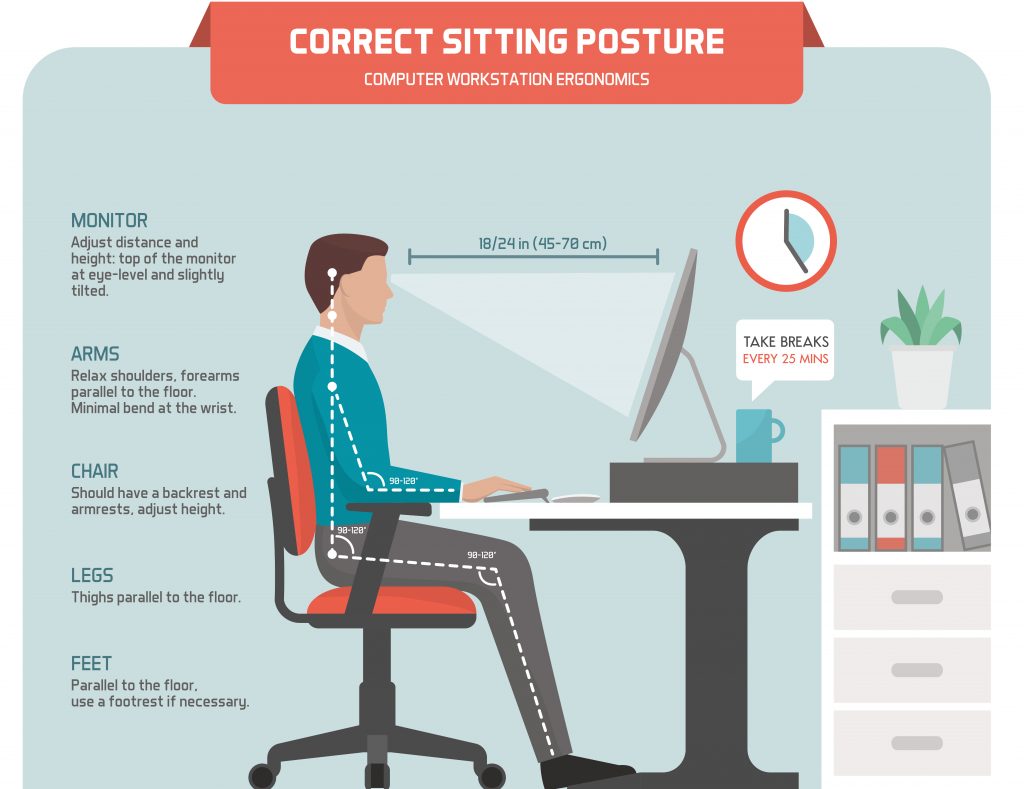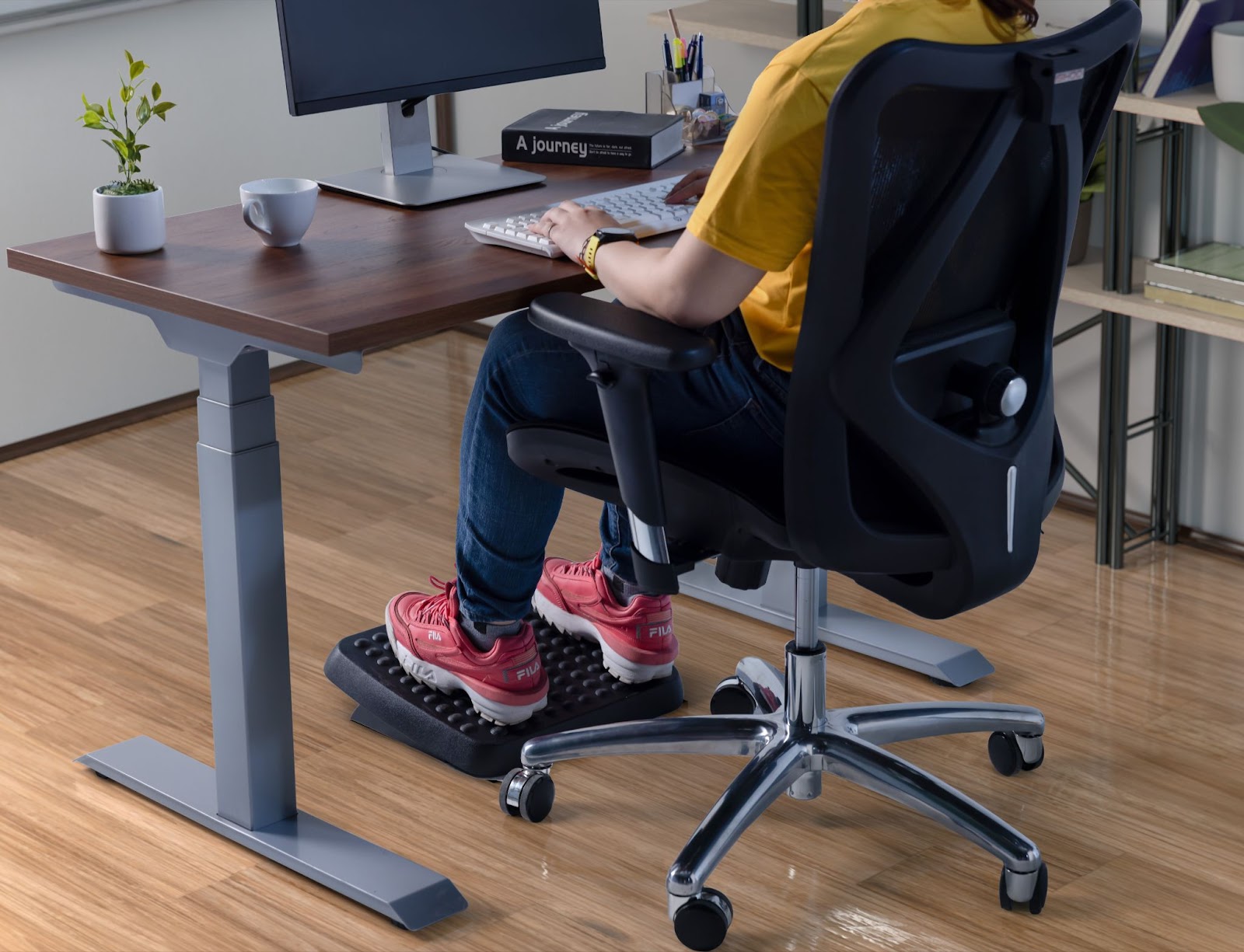Working from home is now a part of everyday life for many office workers. Whether you work one day a week at home or spend more time at home than in the office, setting up an ergonomic workspace should be part of your routine. You may have already noticed that on days when you work at home, you end the day with a sore neck or aching back. This is not surprising if you have not considered your workstation’s ergonomics.
It is tempting to sit in a comfortable armchair or on the sofa when working from home. Unfortunately, this will not provide you with sufficient back support. It is also not a position our bodies will tolerate for very long. Similarly, although the use of laptops at home is convenient, without any external equipment, you will spend a large amount of time looking down. Therefore, putting a strain on your neck.
SOME USEFUL TIPS
Environment – This is something that is more difficult to control when working from home. Try to work from a quiet space with minimal distractions. When you are in your working space, place all the equipment you need as close to you as possible. This will help avoid excessive head turn and reaching.
Chair – If you do not have a suitable office/ergonomic chair at home, a dining table chair with a firm seat and additional backrest/lumbar support is best. Sit all the way back into the chair and place your feet firmly on the floor; place a box or books underneath your feet if they are dangling. Knees should be a 90-degree angle.
Desk – When your elbows are in by your side, the top of the desk should be about one inch lower than the elbows. This can be difficult to achieve in a home setting. You may need to put a cushion onto your seat to make yourself higher in the chair. If you do not have a desk suitable to work on, you may be sitting on your sofa or bed. Be sure to sit upright with your back fully supported, place a cushion on your knees and place your laptop here.

Laptops– Most people use laptops when working from home. However, on their own without any external equipment, they are not designed for extended use. If you are only using a laptop, keep the keypad directly in front of you, at a comfortable typing distance; your elbows should be touching or almost touching your sides. Push the screen open/away from you, so that you can keep your neck relatively straight and look down at your screen by moving your eyes downwards only.
External equipment– If you work from home regularly, consider using a laptop stand/riser or place your laptop on top of a stack of books. With this, you will need to use a separate keyboard and mouse. This will allow you to place your screen at a higher level but keep your shoulders and arm at a lower and more relaxed height.
Lighting- Lighting should not cause glare on computer screens or make you squint at the screen. Be sure to have enough lighting if working at night.
AND DON’T FORGET TO MOVE!
Moving is important regardless of where you are working. At a minimum, every 45 minutes to one hour, we need to get up and move around. However, consider your home setup. If you are having difficulty achieving an ergonomic workspace at home, ensure you move about even more.

ERGONOMICS SUPPORT FOR YOUR COMPANY
To learn more about office setup and good ergonomic principles, you can reach out to Fit for Work. Fit for Work can talk to you about how an ergonomic programme within your office can increase productivity, increase staff satisfaction, improve staff retention and reduce sick leave.



